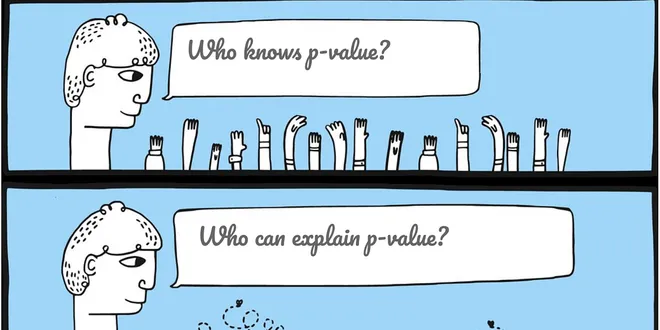p-value
The p-value is a fundamental concept in statistics, particularly in hypothesis testing. It quantifies the probability of obtaining results at least as extreme as those observed, assuming that the null hypothesis is true. A low p-value indicates strong evidence against the null hypothesis, suggesting that the observed data is unlikely to have occurred by chance. Typically, a p-value threshold of 0.05 is used, where values below this threshold lead to the rejection of the null hypothesis. Understanding p-values is crucial for interpreting statistical results and making informed decisions based on data analysis.

P value — Explained
P value is a fundamental concept in inferential statistics which is used to draw conclusions based on the results of statistical tests. In a nutshell, p value is a measure of extremeness or…
📚 Read more at Towards Data Science🔎 Find similar documents

What is p-value?
If you google “what is p-value”, the first result shown on the page is the definition from Wikipedia: Hmm… the good thing is we know this definition is correct; the bad thing is this definition is…
📚 Read more at Towards Data Science🔎 Find similar documents

What is P-value?
Every Data Scientist must have come across a question, What is P-value and how do we use it in our statistical analysis? At-least one question of every data science interview is about P-value and its…...
📚 Read more at Towards Data Science🔎 Find similar documents

p-value Basics with Python Code
What is p-value? It is the probability that you will obtain a test result given an actual distribution. Or in an A/B test setting, it is the probability that we measure something, like an average…
📚 Read more at Towards Data Science🔎 Find similar documents

Mastering P-values in Machine Learning
A p-value is a statistical metric that helps statisticians decide whether they should accept or reject the null hypothesis. The p-value measures the probability there is no relationship between…
📚 Read more at Towards Data Science🔎 Find similar documents

Demystifying the P-Value for Data Scientists
So what is the p-value? The p-value is a number, calculated from a statistical test, which measures the probability of obtaining a result at least as extreme as the one observed, assuming the null hyp...
📚 Read more at Level Up Coding🔎 Find similar documents

You’re Probably Misusing the P-Value
The p value is an important concept in frequentist statistics, and it is usually taught in introductory statistics courses. Unfortunately, many of these courses either do a poor job of explaining…
📚 Read more at Towards Data Science🔎 Find similar documents

Wait, so what’s a P-Value?
If someone asked you to explain what a probability value (p-value) is, how would you intuitively explain? In this article, I’ll poke at this question and build up your intuition on what a p-value…
📚 Read more at Towards Data Science🔎 Find similar documents

What is “p-value” short for? No, seriously.
Technically, p-value stands for probability value, but since all of statistics is all about dealing with probabilistic decision-making, that’s probably the least useful name we could give it. Painful…...
📚 Read more at Towards Data Science🔎 Find similar documents

p-value and it’s significance
The p value is used all over statistics. In scientific articles we often read about p values. Everyone knows that you use p values to determine statistical significance in a hypothesis test. Despite…
📚 Read more at Analytics Vidhya🔎 Find similar documents

What Should Your Decision Be When Your p-value = 0.052?
In hypothesis testing, the “p-value < α” is almost universally used as a criterion for statistical significance and also as a decision rule, where α is the level of significance. For example, in…
📚 Read more at Towards Data Science🔎 Find similar documents

The Problem with P-Values
One of the most powerful metrics of statistics, the p-value is often misunderstood and misused. To understand the scope of influence and limitations of this statistic, we must establish a common…
📚 Read more at Towards Data Science🔎 Find similar documents

